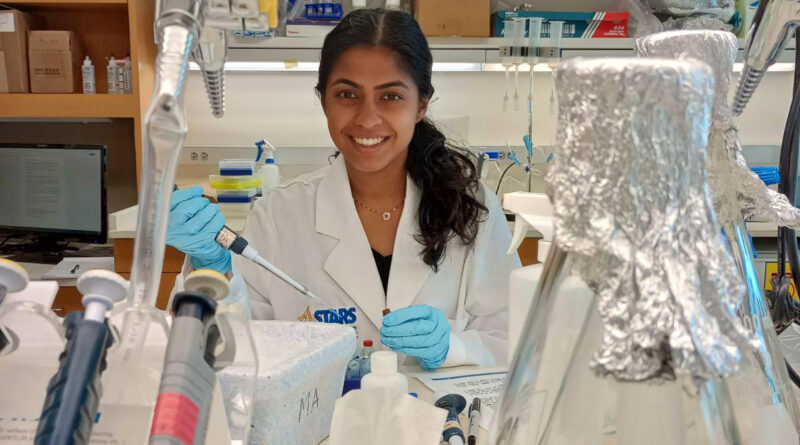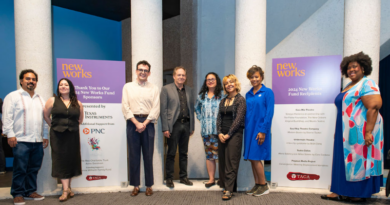Greenhill Senior Researches Stem Cells To Aid Leukemia Studies
Greenhill School senior Pooja Sanghvi is researching how hematopoietic stem cells – the ones that give rise to other blood cells – metabolize glucose, specifically in bone marrow.
“To learn more about leukemia, we have to learn more about the stem cells,” Sanghvi said. “I just thought their whole relation to a cancer that we know very little about was very interesting, so I wanted to continue that over the (school) year.”
Sanghvi got involved in this research when she was a summer intern at UT Southwestern Medical Center, assigned to study stem cells. Now, her senior capstone project focuses on how these cells break down glucose through the glycolysis pathway as opposed to other metabolic pathways.
“We’re kind of studying how that happens, which enzymes are necessary for the breakdown of glucose and which enzymes these specific cells rely on because they seem to be different than other cells in the body,” she said.
The capstone is for credit at Greenhill. However, research is conducted through UT Southwestern as part of a series of projects to learn more about what leukemia relies on and how those cells vary from healthy hematopoietic stem cells.
Her research has included three main experiments. In the first, she measured antibiotic activity by isolating a specific enzyme in mice and looking at its function through different acids.
The second one used flow cytometry – a technique involving lasers – to analyze cells in the bone marrow, the heart, and the liver.
“From that, we can compare survival rates when we apply different conditions to the mice so we can find out the survival rates of these different cells and how well they’re growing,” she said.
The third experiment is called metabolomics, a technique Sanghvi’s lab uses to look at how various blood cells break down into different blood cells in the body. “We look at all the different blood cells, and we look at which metabolites are peaking in those blood cells. For example, glucose or lactate, so we can measure which medical lights are necessary and therefore figure out which pathways are necessary for these cells.”
Sanghvi’s plans for publication depend on what she discovers. She will present her findings at the end of the school year as part of her capstone but also wants to consolidate it into a project, whether that’s a paper or another medium.
Her career goal is to become a doctor and conduct research on the side.
“I think it’s important to focus on the patient aspect of it but also to get into the science of it, which not everyone is able to do,” she said. “I don’t know exactly what kind of doctor I want to be, but this has really helped show me what the research world looks like because I think it was really mystifying for me before this.”
Sanghvi describes the lab as a different environment from what she’s experienced in the past: “School is a very holistic view on education, and in the lab, everyone knows so much about a very narrow topic.”









